The growing movement of health care to the home is evident by a growing list of point solutions featured at CES 2024. Digital health has been a fast-growing category of consumer-facing devices at CES for over a decade. But with the growing ubiquity of connectivity, cloud computing, sensors and this year AI “everywhere,” a person’s home as their health-hub is an increasingly practical scenario.
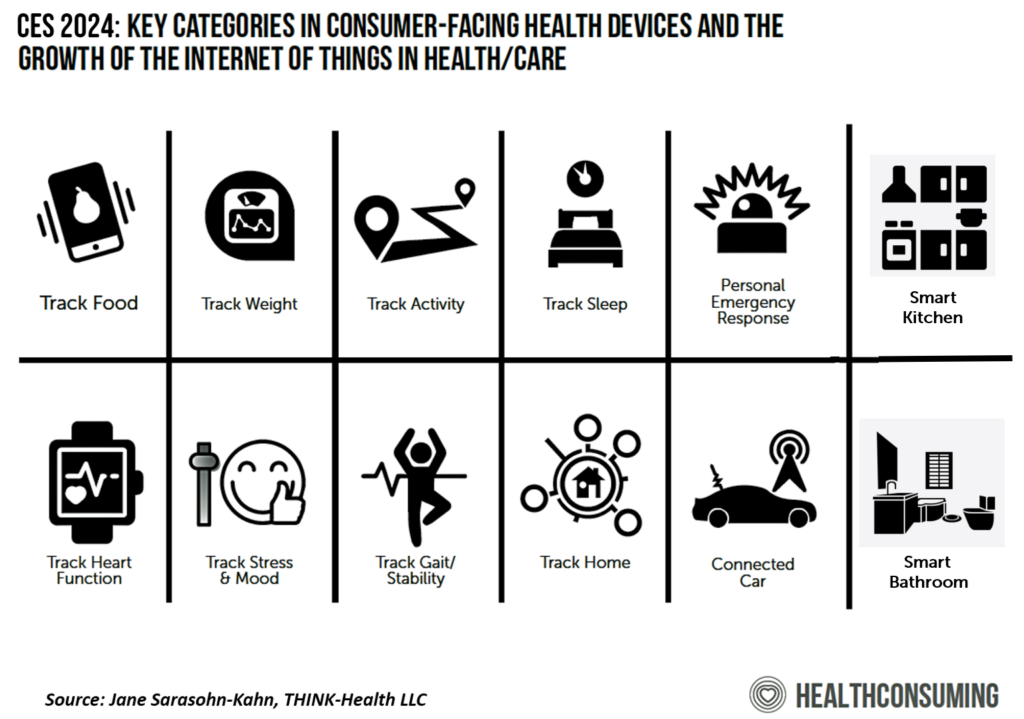
I track many categories of products at CES each year, and this year added into my portfolio the smart kitchen and smart bathroom. We’ve had components of these two “rooms” at previous CES exhibitions, but this year the rooms are maturing and more integrated.
I spent time on “house calls” with two concepts for smart(er) living for health and well-being: with staff in the Amazon Experience Area, and at the Samsung Health House which is a project in collaboration with the AARP AgeTech Collaborative.
The Amazon Experience focused on ambient intelligence through the home; click on the video for a summary across various daily living flows, such as making life simpler, smoother, smarter, safer, and overall “better.” For health, some specific applications addressed sleep and light, cooking and growing vegetables indoors, childcare and education, among other collaborators in this smarter home environment. For more details from the company, Amazon made several announcements at CES 2024 most of which impact peoples’ personal health ecosystems.
Separate from CES during the #JPM2024 conference in San Francisco, Amazon announced a health care collaboration with Omada Health as a launch partner for a new effort called Health Condition Programs. Omada Health has a strong track record in disease management helping people deal with chronic conditions, and working with Amazon is seen as a way to help “surface” patients who may be shopping for health care products on Amazon but be unaware they are eligible for Omada Health services. 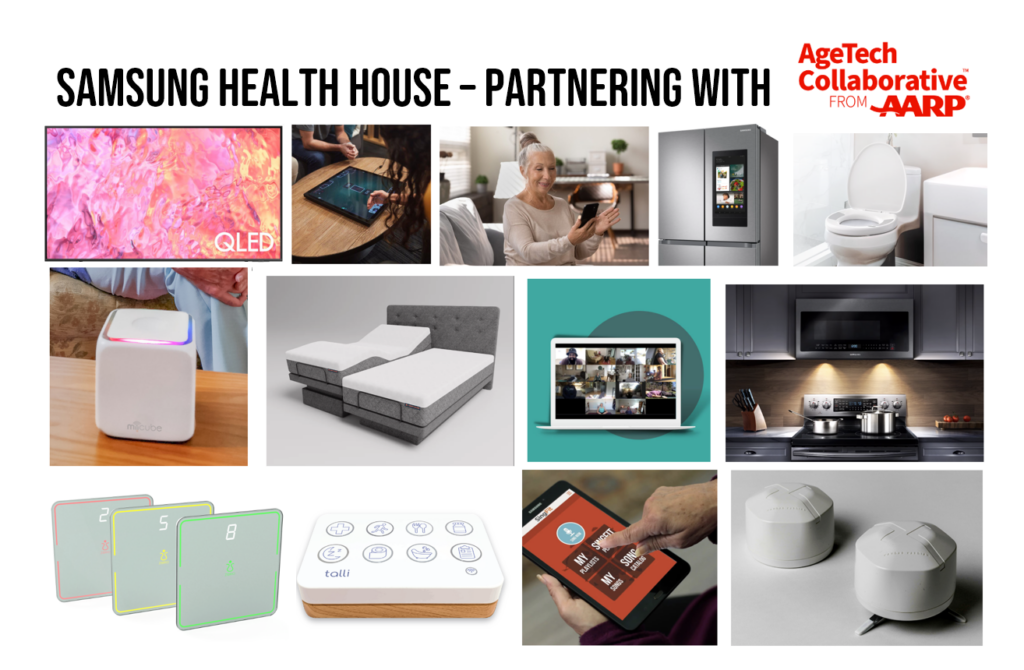
Segueing to the Samsung Health House, note AARP’s latest research into people age 50 and over, 77% of whom want to age at home. The AARP AgeTech Collaborative partnered with Samsung to serve up the Samsung Health House. As AARP was the partner in this project, the target market for the House was the person 50 years of age and over — AARP’s core constituents.
But we find that many of the applications in this data-device ecosystem were relevant and useful for younger people, as well. In fact, during my tour of the House and discussions with various device vendors who collaborated across the various “rooms,” I learned that some of the innovations came from tech designed for a general or younger population and user-centered design approaches repurposed and re-imagined the innovations for the AARP audience.
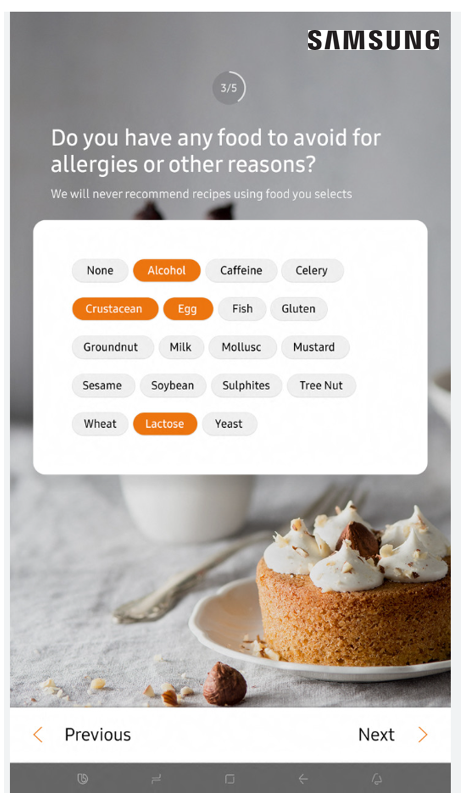
The applications and devices furnished in the House address many aspects of daily living beyond the strictly medical and remote health monitoring: for example,
- SingFit (originally named Music Health Technologies, app shown in the lower right in red on the phone) leverages music therapy incorporating evidence-based approaches through prescribed singing at scale (for music-as-medicine)
- The Gameboard looks like a checkers or chess board and is a digital platform for interactive tabletop gaming with loved ones and friends playing in other locations — billing itself as a social gaming platform (for play-as-medicine)
- The Samsung Family Hub refrigerator enables searching for healthy recipes and grocery shopping lists, as well as being a central “station” for messaging and leaving notes (for food-as-medicine, etc.).
I am especially enthused about the bathroom in the Samsung Health House as this home space is particularly well-suited to collecting biometric information that is super-useful for health-tracking and -prediction making — in unobtrusive ways. For example, the Casana Heart Seat is an FDA-cleared device that measures heart rate and blood oxygen, awaiting regulatory clearance for non-invasive blood pressure reading directly from the “seat.” As such, the toilet provides multiple functions, something the consumer and caregiver alike are looking for embedded in one device.
Co-located in this bathroom is the Zibrio Stability Scale which note only measures weight but balance (gait) to predict fall risk. The technology was developed as part of the U.S. NASA Space program and carries a Space Certified Technology seal.
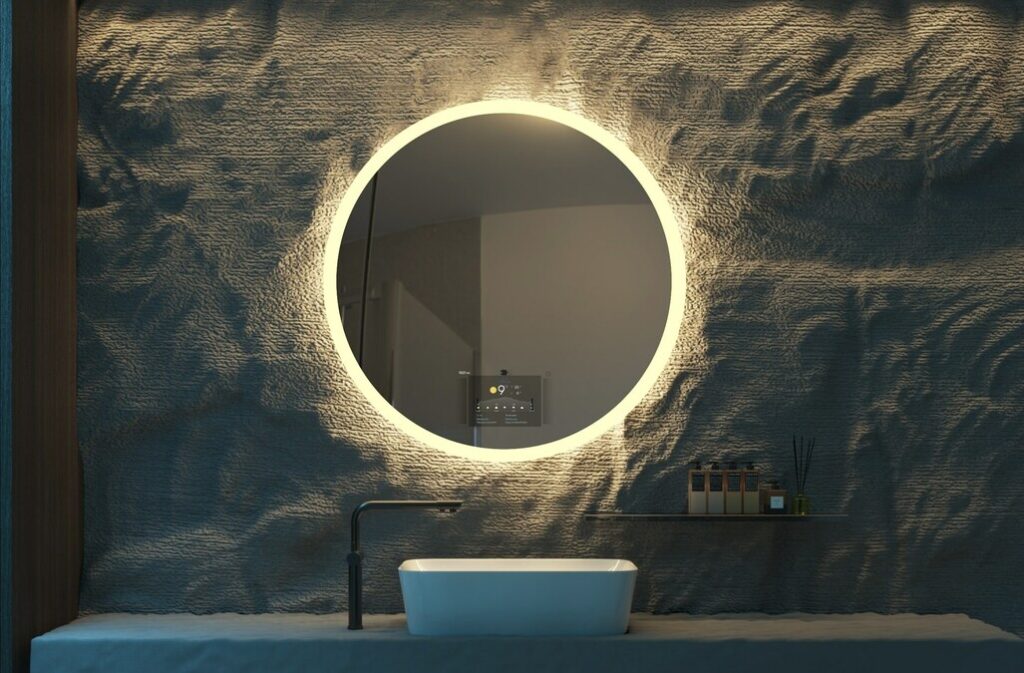
At CES 2024, we can find other innovations that fit into the smart bathroom. For several years I’ve been tracking the Baracoda smart mirror; this year at CES, the French company unveiled BMind, reputed to be the first smart mirror for mental wellness. Paired with the CareOS operating system, BMind detects a consumers’ mental state through gesture recognition, voice, and language.
Complementing physical and mental health, the bathroom can also bolster oral health. There are several smarter toothbrushes revealed at CES 2024, building on popular oral care products previously featured at CES from Oral-B, Philips, and Colgate. A CES 2024 Innovation Award winner for Accessibility and Aging Tech is Proclaim Health for the Custom-Jet Oral Health System. For more on oral care at CES, see this post I wrote from CES 2020 on The Internet of Teeth.
Health Populi’s Hot Points: As Rick Robinson the AARP Innovation Labs has said, “AgeTech is for all ages.”
We mere humans are all effectively aging in our places and spaces. So Rick is spot-on in that technology that is well-conceived, -designed, and -marketed (including value-based pricing and after-purchase services) can be useful for all people. By taking on these two House Calls at CES 2024, we can see how elements of the Amazon Experience can mash-up with aspects of the Samsung Health House to deliver streamlined and safe living for people of any age. It’s especially exciting to see that AI embedded in many devices can add a level of service for prediction and prevention when it comes to health and well-being. It’s still early days for this as point solutions aren’t integrating very well (yet) for the different data from different devices (and vendors) that would flow seamlessly into a single source of truth….but we’re getting there.


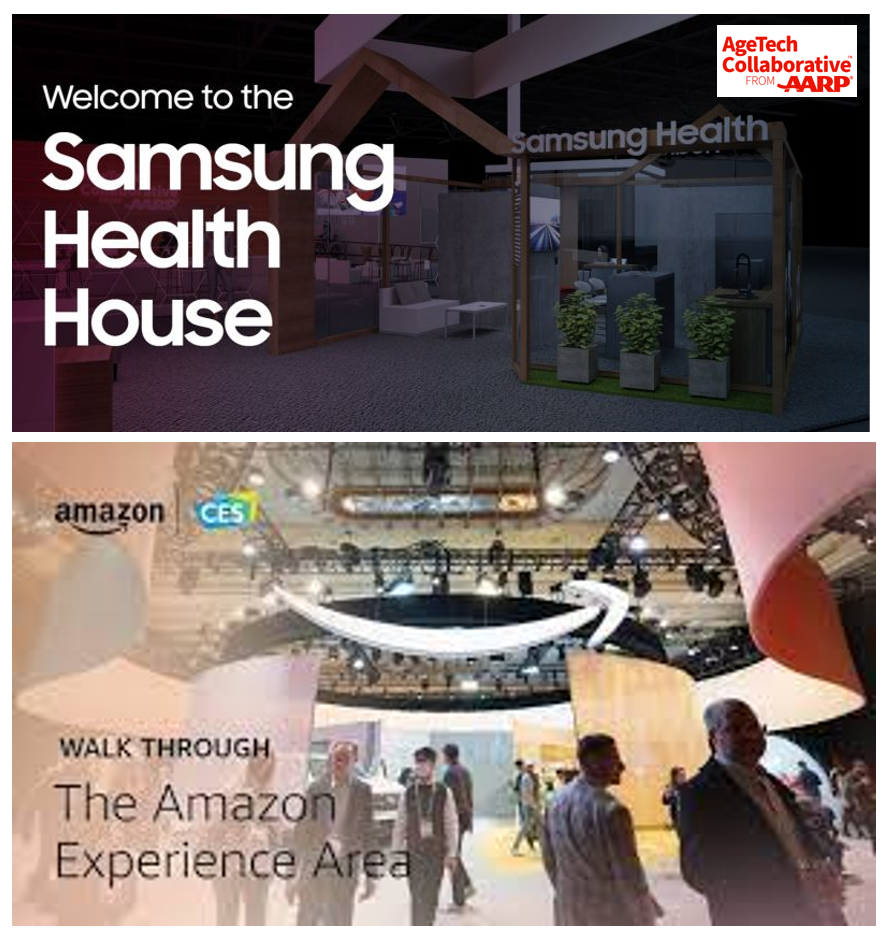


 Thank you,
Thank you,  As a proud Big Ten alum, I'm thrilled to be invited to
As a proud Big Ten alum, I'm thrilled to be invited to  I was invited to be a Judge for the upcoming CES 2025 Innovation Awards in the category of digital health and connected fitness. So grateful to be part of this annual effort to identify the best in consumer-facing health solutions for self-care, condition management, and family well-being. Thank you, CTA!
I was invited to be a Judge for the upcoming CES 2025 Innovation Awards in the category of digital health and connected fitness. So grateful to be part of this annual effort to identify the best in consumer-facing health solutions for self-care, condition management, and family well-being. Thank you, CTA!